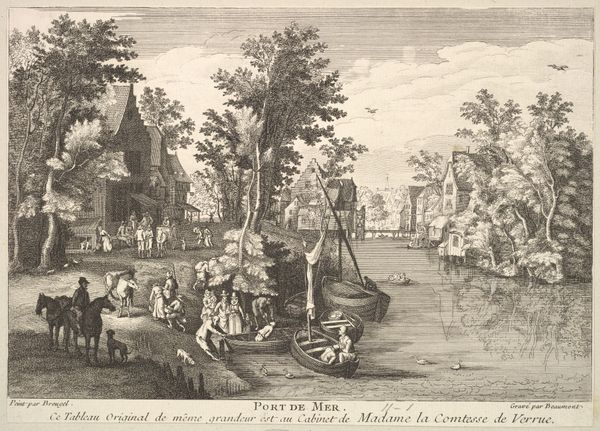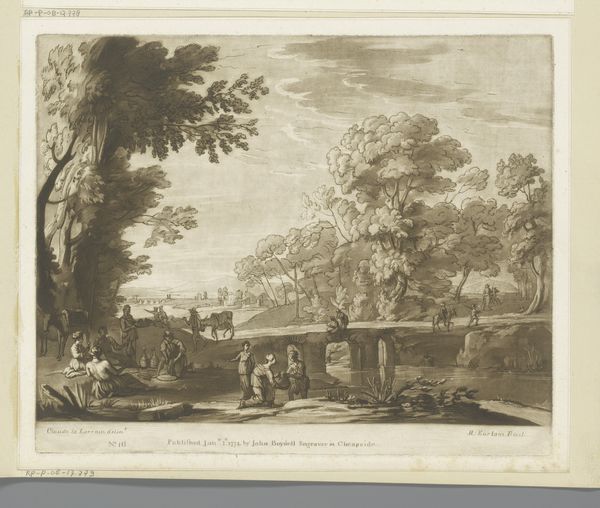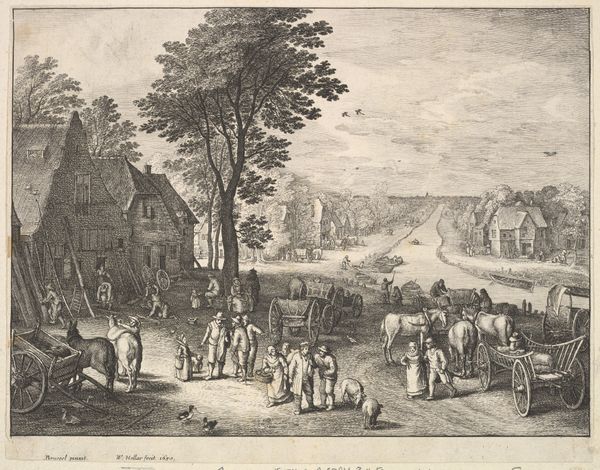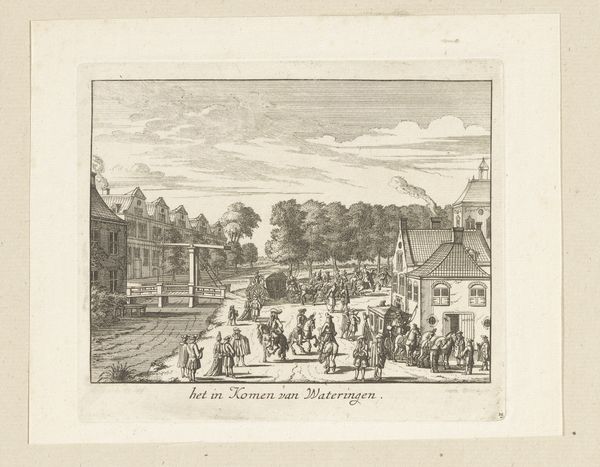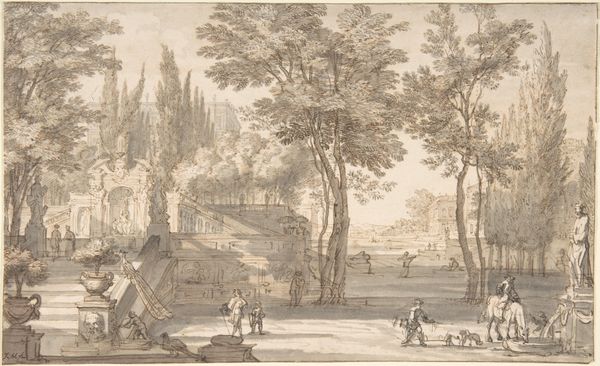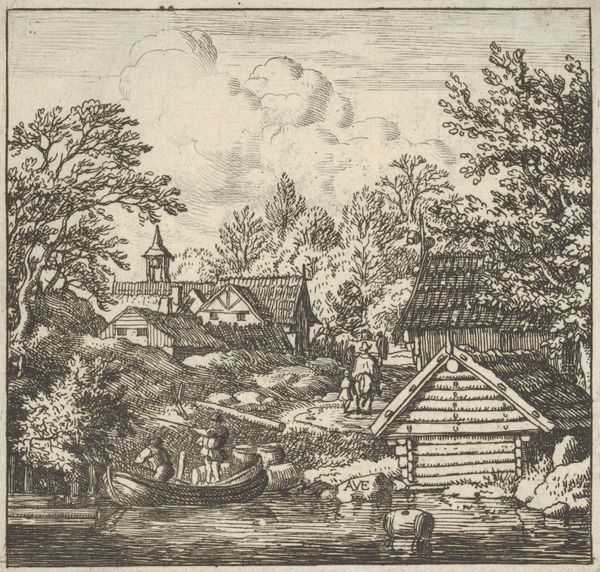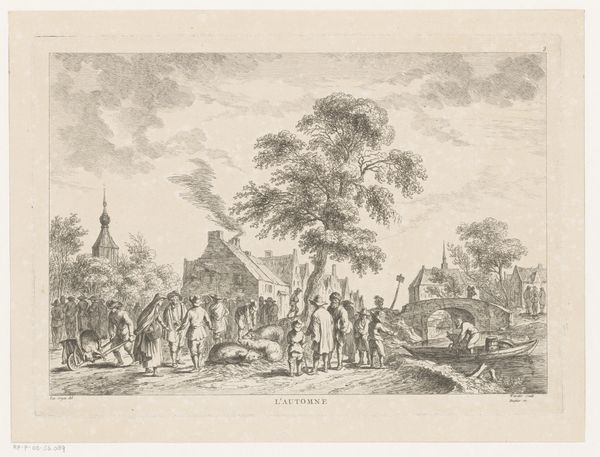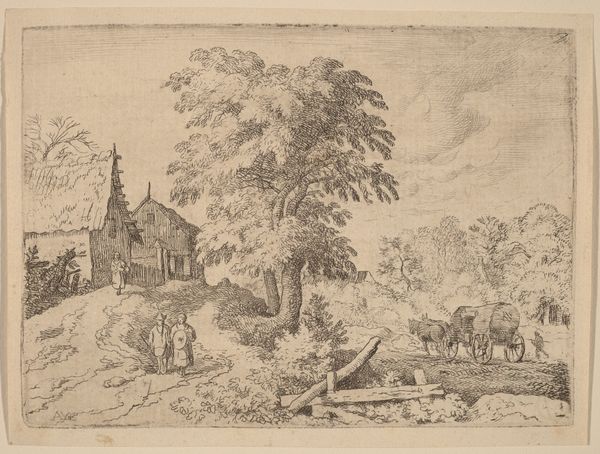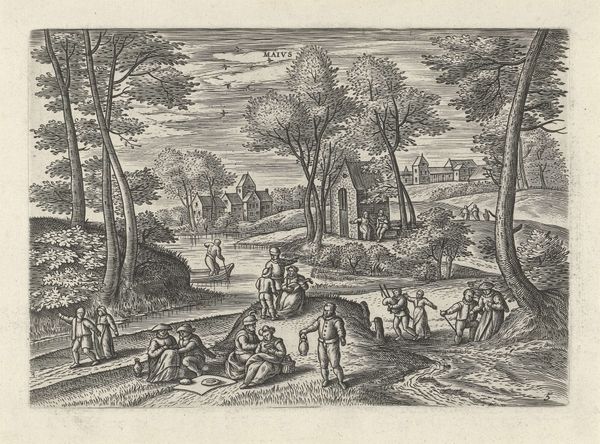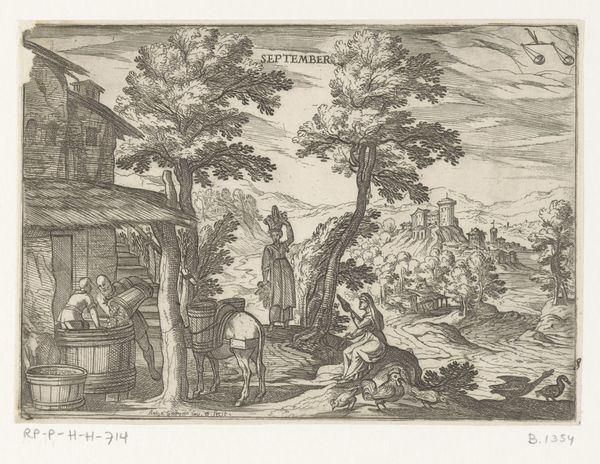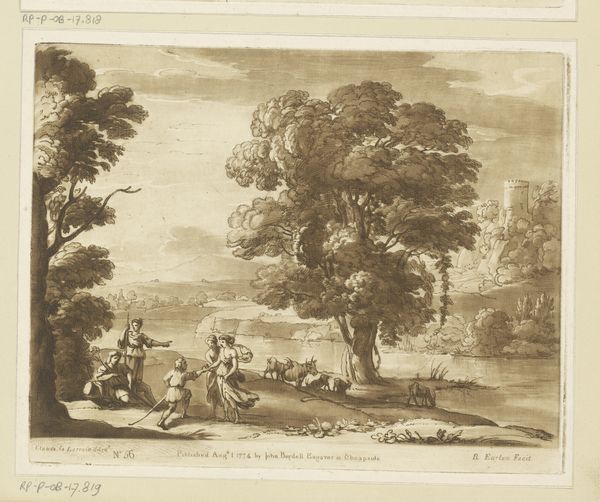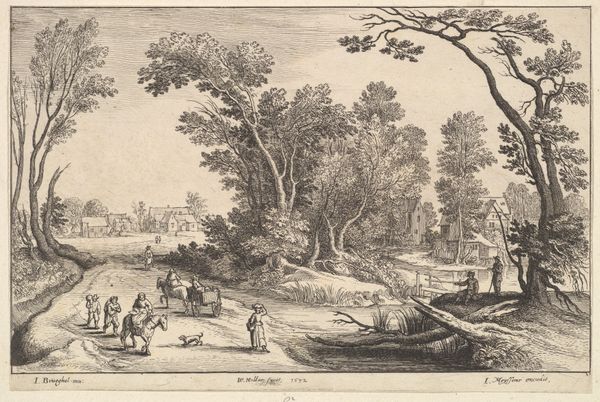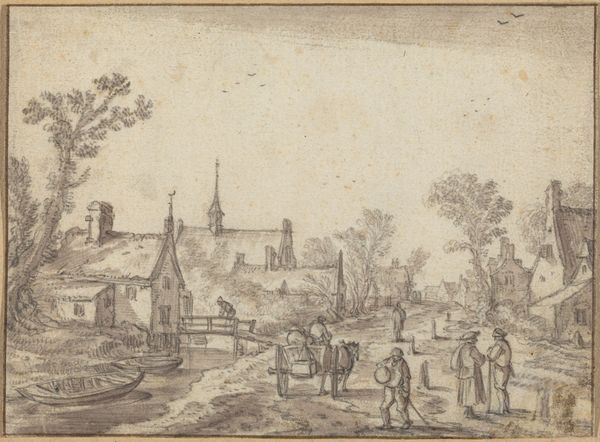
drawing, print, etching, ink, pen
#
drawing
#
ink drawing
#
pen drawing
#
dutch-golden-age
# print
#
pen sketch
#
etching
#
landscape
#
ink
#
pen
#
cityscape
#
genre-painting
Dimensions: Sheet: 7 1/2 × 10 13/16 in. (19.1 × 27.4 cm)
Copyright: Public Domain
Editor: This is "The Ferry," a 1649 etching by Wenceslaus Hollar. I'm struck by the detail, especially how he captures the bustle of daily life along the waterway. What do you see in this piece, especially considering the context of its creation? Curator: I see a complex tapestry woven from the threads of labor and exchange. Hollar meticulously renders the social machinery of 17th-century transportation. The etching allows us to examine the means by which people, goods, and, crucially, information circulated. Look closely at the act of loading and unloading - that is labour made visible, a vital component of the urban experience. Editor: So, it's less about the aesthetic beauty of the landscape and more about…the logistics? Curator: Exactly! The scene itself becomes a document of economic activity. The very *materiality* of the print, reproduced and distributed, played a role in disseminating these images of commerce, reinforcing societal values around work. Hollar's labor mirrors the ferrymen's; both engage in forms of production. Consider how the access to this image would have varied across society. Who could afford a print like this? How does that shape our understanding? Editor: It's fascinating to think about the print itself as a commodity, part of the very system it depicts! I initially saw a charming genre scene, but I now see it reflects labor relations of that time, not simply capturing a single picturesque moment. Thank you! Curator: Indeed, seeing the interplay between materials, production, and societal structures enhances our understanding of the art in question. It offers more than just a "pretty picture;" rather a slice of life from the Dutch Golden Age, made tangible and replicable.
Comments
No comments
Be the first to comment and join the conversation on the ultimate creative platform.
